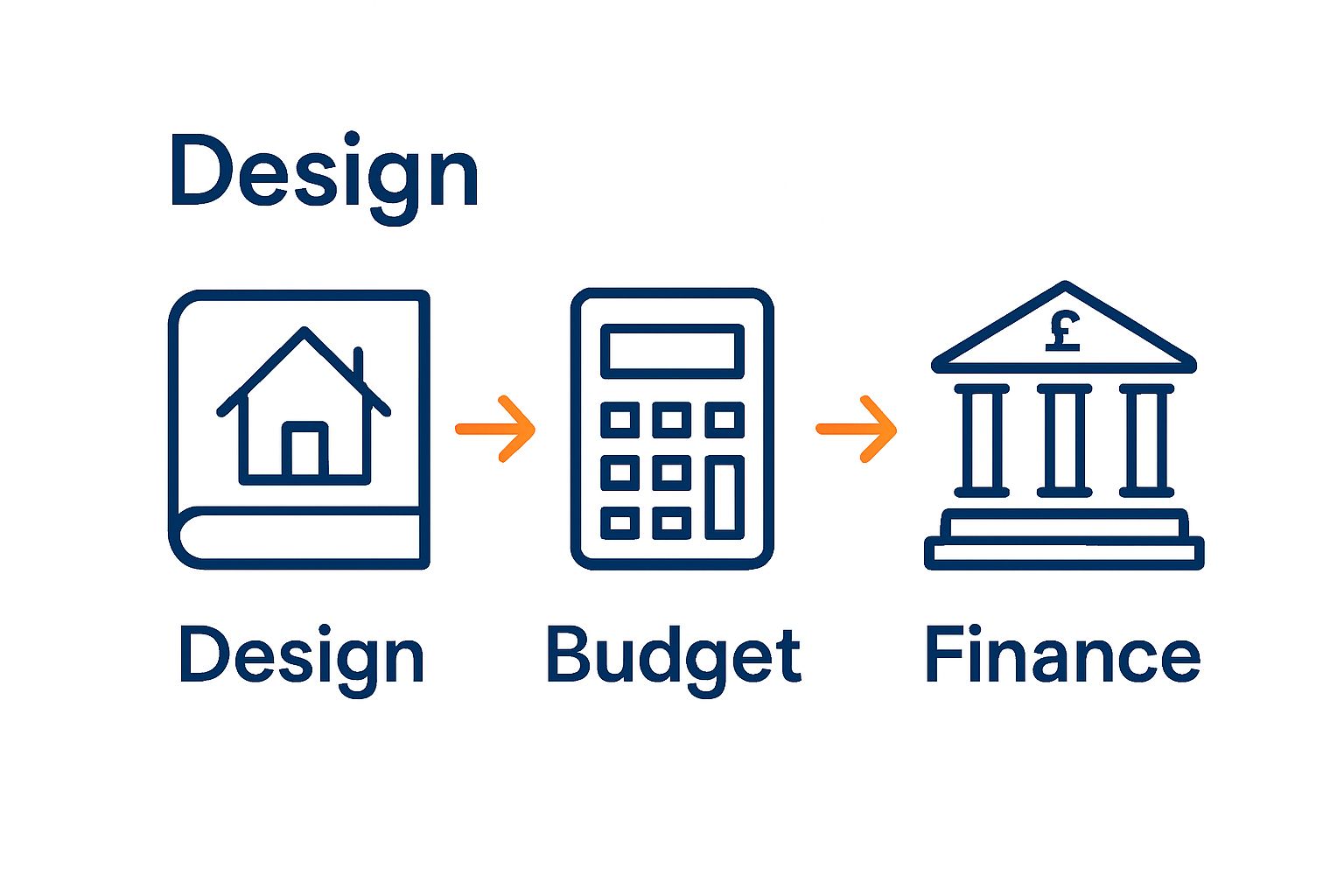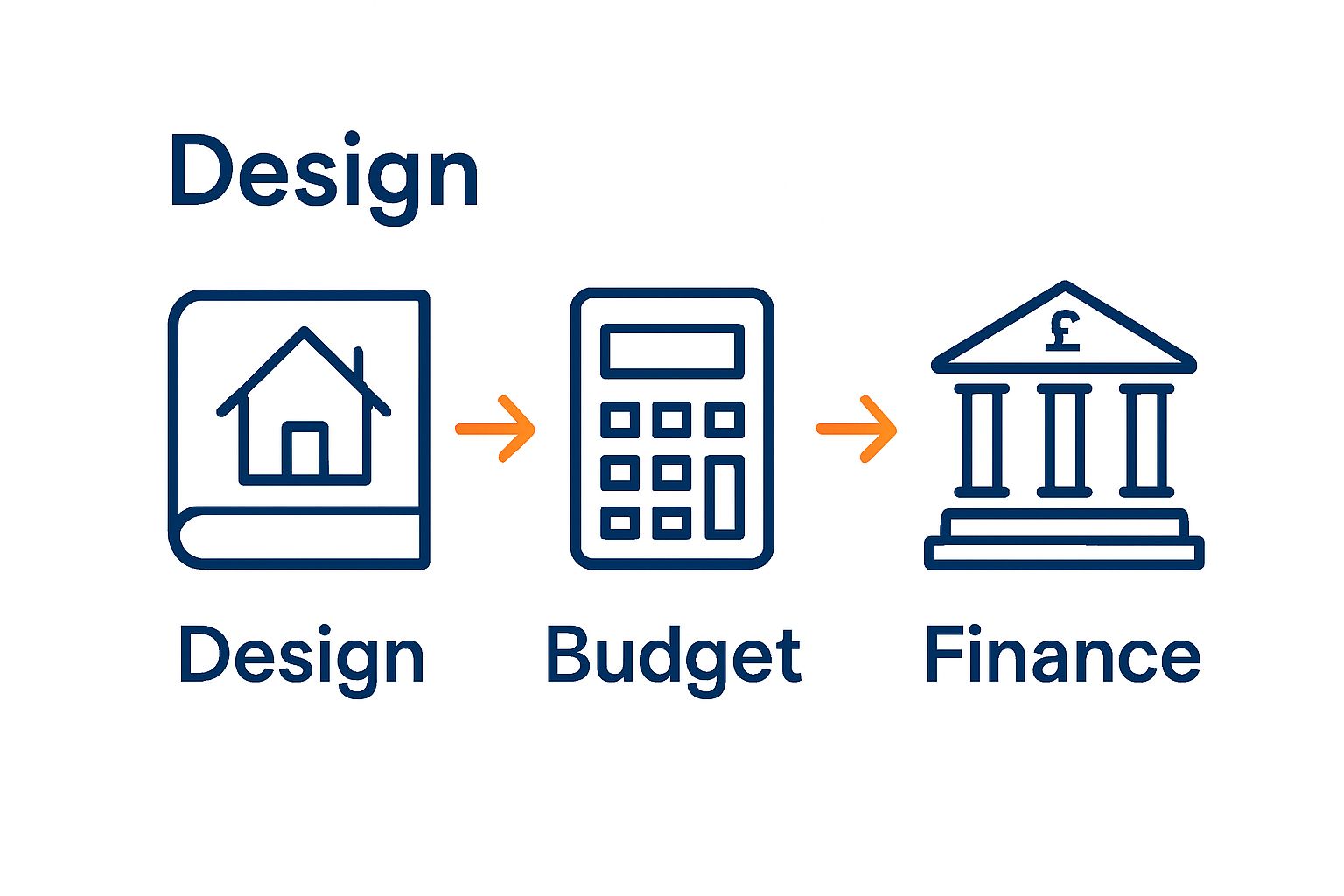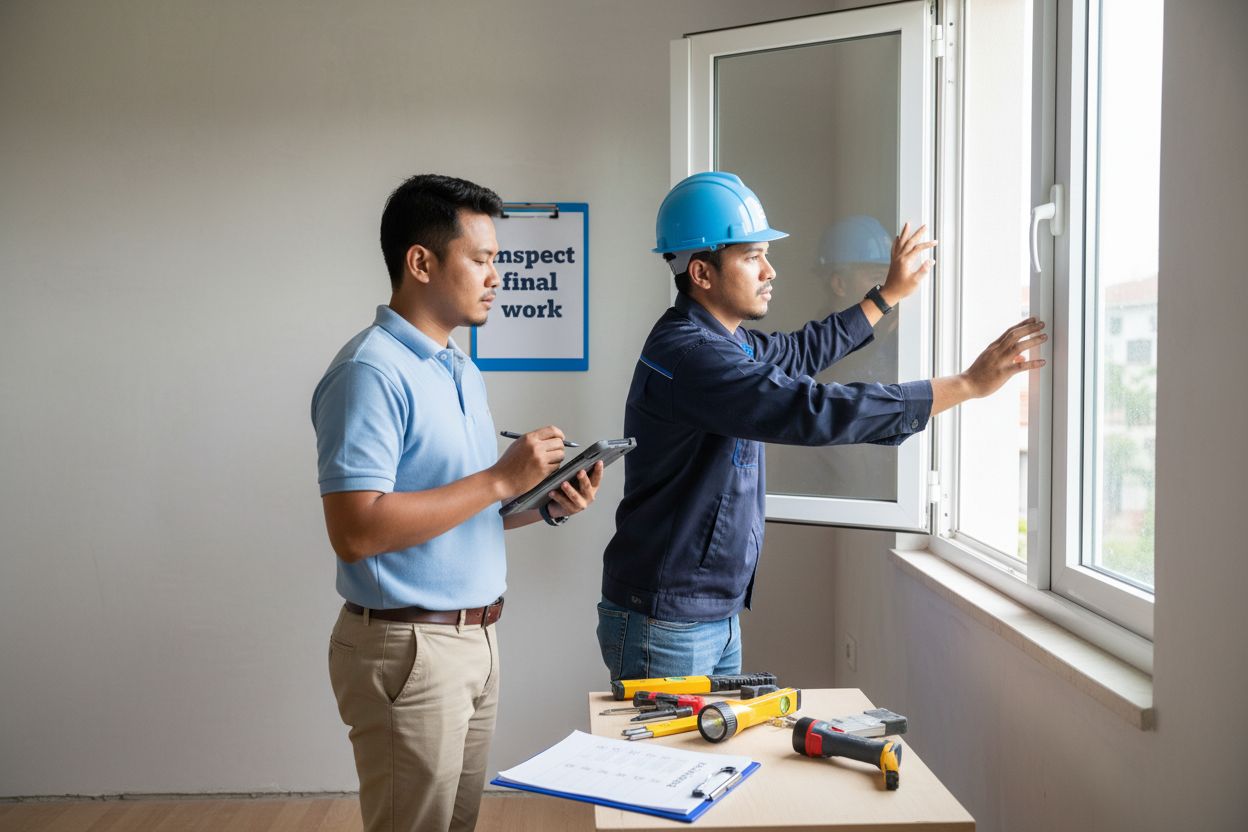
Blog
How to Build Your Own Home: A Step-by-Step Guide | RumahHQ

Building your own home in Malaysia might sound like a monumental challenge, especially with so many regulations and steps to follow. Yet surprising as it sounds, having the right land survey and zoning insight is the single biggest factor in preventing costly mistakes. Most people dive into construction excited about designs and finishes, but miss this crucial groundwork. Laying out this path step by step uncovers how smart choices at the start can unlock smooth building ahead.
Table of Contents
Quick Summary
| Key Point | Explanation |
|---|---|
| 1. Assess land and zoning laws | Understanding local regulations ensures compliance and identifies construction limitations before purchasing land. |
| 2. Create a detailed budget | Itemising expenses and allowing for contingencies ensures financial preparedness throughout the building process. |
| 3. Choose a professional architect | Hiring an architect aids in creating plans that meet your needs while complying with local building codes. |
| 4. Secure all necessary permits | Obtaining permits is essential for legal construction and protects against future legal issues or project delays. |
| 5. Conduct a thorough final inspection | A detailed final review helps ensure that all aspects of the home meet quality standards before moving in. |
Step 1: Assess your land and zoning regulations
Building your own home begins with understanding the foundational requirements of your potential construction site. This critical first step involves thoroughly examining your land and comprehending the local zoning regulations that will significantly impact your home building project.
Before purchasing land or commencing construction, you must conduct a comprehensive site assessment. This process involves investigating the physical characteristics of your property and understanding the legal framework that governs construction in your specific area. Local municipal authorities play a crucial role in determining what can be built and where.
Start by obtaining a detailed land survey from a professional surveyor. This document will provide precise measurements of your property, identify boundaries, and reveal critical topographical information. The survey helps you understand the land’s natural features, such as slopes, soil composition, and potential drainage issues that could affect your construction plans.
Zoning regulations are complex legal frameworks that dictate land use, building heights, setback requirements, and other critical construction parameters. Contact your local planning department to request comprehensive zoning maps and regulations specific to your plot. These guidelines will specify critical details such as:
- Maximum building height
- Percentage of land that can be covered by structures
- Distance requirements from property boundaries
- Specific architectural style restrictions
- Permitted residential building types
Additionally, investigate any environmental considerations that might impact your construction. Some areas have specific protections for wetlands, wildlife habitats, or geological features that could limit your building options. According to the Environmental Protection Agency’s smart growth guidelines, understanding these ecological constraints is essential for responsible land development.
Successful completion of this step means having a comprehensive understanding of your land’s potential and limitations. You should have a detailed survey, complete zoning documentation, and a clear picture of what type of home can be constructed on your specific plot. This groundwork prevents costly mistakes and ensures your home building journey starts on a solid, legally compliant foundation.
Step 2: Create a budget and secure financing
After assessing your land and understanding zoning regulations, the next crucial step in building your own home is developing a comprehensive budget and securing the necessary financial resources. This stage transforms your home building dream from a concept into a tangible project with clear financial boundaries.
Calculating the total project cost requires meticulous planning and realistic expectations. Begin by breaking down potential expenses into distinct categories including land preparation, construction materials, labour costs, permits, professional fees, and contingency funds. Construction experts recommend allocating an additional 10 to 15 percent of your total budget for unexpected expenses, which are almost inevitable in home building projects.
To develop an accurate budget, consult multiple contractors and request detailed quotes that itemise every potential expense. These quotes will help you understand the true financial landscape of your home construction. Professional quantity surveyors can provide invaluable assistance in creating precise cost estimations and identifying potential areas of financial efficiency.
Financing options in Malaysia are diverse and include several government and private sector mechanisms. Consider exploring options such as:
- Housing loans from local banks
- KWSP (Employees Provident Fund) housing withdrawal schemes
- Government housing financing programmes
- Personal savings and investments
- Construction-specific loan packages
According to Bank Negara Malaysia’s housing finance guidelines, different loan products have specific eligibility criteria and documentation requirements. Prepare comprehensive financial documentation including proof of income, credit history, existing financial commitments, and a detailed project proposal.
Meeting with multiple financial advisors and bank representatives will help you understand the most suitable financing strategy for your specific circumstances. Transparency about your entire financial profile is critical when seeking construction financing. Some banks offer specialised construction loans that release funds in stages, matching your project’s progress and minimising financial risk.
Successful completion of this step means having a detailed, realistic budget, pre-approved financing, and a clear understanding of your financial capabilities and limitations. Your budget becomes the financial blueprint that will guide every subsequent decision in your home building journey.

Step 3: Design your home layout and select materials
Transitioning from budget and financing, the design phase represents the moment where your home building vision begins to take tangible shape. This critical step involves creating a functional, aesthetic layout that meets your lifestyle needs while simultaneously selecting materials that balance quality, durability, and cost-effectiveness.
Architectural design is more than just drawing floor plans. It requires thoughtful consideration of your current and future living requirements. Start by mapping out your family’s daily routines, anticipated space usage, and long-term lifestyle projections. Consider factors like potential family expansion, work-from-home needs, entertainment spaces, and personal comfort zones.
Engaging a professional architect or architectural designer becomes crucial at this stage. These professionals translate your vision into precise technical drawings that comply with local building codes and zoning regulations. They will help you optimise spatial relationships, ensure structural integrity, and create designs that maximise natural light, ventilation, and overall living comfort.
Material selection demands careful research and strategic decision-making. Your choices will impact not just aesthetics, but long-term maintenance, energy efficiency, and overall home performance. Consider materials that suit Malaysia’s tropical climate, such as heat-resistant roofing, moisture-resistant wall treatments, and sustainable flooring options that withstand humidity.
Key material selection criteria include:
- Durability and resistance to local environmental conditions
- Cost-effectiveness over the home’s lifetime
- Aesthetic appeal and personal design preferences
- Environmental sustainability
- Maintenance requirements
According to the U.S. Department of Energy’s energy-efficient home design guidelines, integrating energy-efficient design principles can significantly reduce long-term utility costs. This might involve selecting insulation materials, choosing window designs that minimise heat gain, and planning for optimal solar orientation.
Successful completion of this step means having comprehensive architectural drawings, a detailed material selection strategy, and a clear vision of how your home will look and function. Your design should reflect a harmonious blend of personal style, practical functionality, and intelligent engineering that will serve your family for years to come.
Step 4: Obtain necessary permits and contracts
After finalising your home design, navigating the complex landscape of permits and legal contracts becomes the next critical phase of your home building journey. This step transforms your architectural plans into legally sanctioned construction documents and establishes clear professional relationships with contractors and suppliers.
Permit acquisition is a meticulous process that requires patience and thorough documentation. Begin by compiling a comprehensive application package for your local municipal authorities. This package typically includes detailed architectural drawings, land survey documents, environmental impact assessments, and proof of compliance with local building codes and zoning regulations.
Different governmental departments may require specific permits, including construction permits, environmental clearances, and utility connection approvals. Local authorities in Malaysia often have distinct requirements for residential construction, so direct communication with municipal planning offices is crucial. Prepare to submit multiple iterations of your documentation and be ready to make modifications based on official feedback.
Contractor selection and contract negotiations represent another pivotal aspect of this step. A well-structured contract protects both you and your construction team by clearly defining responsibilities, timelines, and financial arrangements. Seek recommendations from trusted sources and interview multiple contractors to ensure comprehensive understanding of their expertise and approach.
Key elements to include in your construction contract:
- Detailed project scope and specifications
- Precise payment schedules
- Clear timeline with milestone markers
- Provisions for potential variations or unexpected challenges
- Warranty and quality guarantees
- Dispute resolution mechanisms
According to Malaysian construction industry guidelines, professional contractors should be registered and possess valid certification. Verify their credentials, review their portfolio of previous projects, and request references from recent clients to ensure reliability and competence.
Successful completion of this step means having all necessary permits approved, a legally robust contract signed with your chosen contractor, and a clear roadmap for the upcoming construction phase. Your documentation should provide a solid legal foundation that minimises potential risks and establishes clear expectations for every party involved in your home building project.
Step 5: Begin construction and monitor progress
With permits secured and contracts signed, the exciting phase of actual construction begins. This critical stage transforms your carefully crafted plans into a physical structure, demanding constant attention, strategic oversight, and proactive management.
Site preparation marks the first tangible step of your construction journey. This involves clearing the land, establishing precise foundation boundaries, and creating infrastructure for utilities. Professional site grading ensures proper drainage, soil stability, and alignment with your original architectural designs. Your contractor will typically manage these initial tasks, but maintaining personal oversight is crucial to ensure alignment with your vision.
Construction progress requires systematic monitoring and regular communication with your project team. Schedule weekly site meetings to review progress, discuss potential challenges, and make real-time decisions. Maintaining a detailed documentation process helps track every stage of development. Consider creating a digital project management folder where you can store photographs, progress reports, and communication logs.
Key aspects to monitor during construction include:
- Foundation and structural integrity
- Adherence to original architectural plans
- Quality of materials being used
- Compliance with building codes
- Workflow efficiency and timeline management
Expect unexpected challenges and remain flexible. Construction projects rarely proceed exactly as initially planned, so maintaining open communication channels with your contractor is essential. Be prepared to make quick decisions and potentially adjust your original plans without compromising structural integrity or overall design quality.
According to housing development research guidelines, careful monitoring of site preparation and construction phases is critical to maintain quality control and project timeline adherence. This means being present, asking questions, and understanding each stage of the building process.
Successful completion of this step means having a steadily progressing construction site that matches your design specifications, with clear documentation of progress, potential modifications, and ongoing quality assurance. Your active involvement transforms the construction from a mere technical process into a personalised home-building experience.
Step 6: Inspect final work and address any issues
As construction nears completion, the final inspection phase becomes your critical opportunity to ensure your new home meets every design specification, quality standard, and personal expectation. This meticulous process represents the culmination of months of planning, investment, and anticipation.
A comprehensive final inspection requires systematic and thorough examination of every aspect of your newly constructed home. Begin by creating a detailed checklist that covers structural elements, finishing details, functional systems, and aesthetic components. Do not rush this process or feel pressured to accept incomplete or substandard work. Your diligence now prevents potential costly repairs or compromises later.
Invite multiple professionals to conduct independent assessments. This might include a licensed building inspector, an independent architect familiar with your original plans, and potentially a specialised engineer to verify structural integrity. Each professional brings a unique perspective and can identify nuanced issues that might escape casual observation.
Key areas to scrutinise during final inspection include:
- Structural alignment and foundation stability
- Electrical and plumbing system functionality
- Wall and ceiling finishing quality
- Door and window installations
- Flooring evenness and quality
- External drainage and waterproofing
Documentation becomes crucial during this stage. Photograph and meticulously record every identified issue, no matter how minor it may seem. Create a formal punch list detailing required corrections, and ensure your contractor commits to resolving these items before final payment.
According to consumer protection guidelines, conducting a final walkthrough with a qualified professional helps identify issues needing correction before final payment and move-in. This step protects your investment and ensures your home meets professional construction standards.
Successful completion means having a thoroughly inspected home with all identified issues formally documented, addressed, and rectified. Your final inspection transforms your construction project from a building site into a personalised living space, marking the transition from construction to homeownership.
The following checklist summarises the key inspection points you should verify during your final walkthrough before moving into your new home.
| Area | What to Check | Why It Matters |
|---|---|---|
| Structural Alignment | Walls, ceilings and foundation are level and stable | Ensures long-term safety and durability |
| Electrical Systems | Outlets, switches and fixtures work as intended | Guarantees safety and functionality |
| Plumbing | No leaks; taps and drainage function efficiently | Prevents water damage and costly repairs |
| Finishing Quality | Paint, tiling and joints are even; no gaps or cracks | Delivers aesthetic appeal and structural quality |
| Doors & Windows | Open, close and lock securely; no misalignment | Secures property and improves insulation |
| Flooring | Surfaces are even; no damage or unevenness | Comfort, appearance and ease of cleaning |
| External Drainage | Water flows away from the foundation; good waterproofing | Reduces risk of flooding and structural issues |

Ready to Simplify Your Home Building Journey?
Building your own home often feels overwhelming. From understanding zoning regulations and creating accurate budgets to managing contractors and securing permits, each step brings complex decisions and the risk of costly mistakes. If you have ever felt lost between endless paperwork, unpredictable costs, or the challenge of finding trustworthy professionals, you are not alone. Many readers of the How to Build Your Own Home guide share these concerns, searching for clear solutions to keep their dream project on track.

Take control of your home building experience today. At RumahHQ, we offer a transparent, all-in-one platform designed specifically for homeowners in Malaysia. Our services include free design consultations, fixed-price project packages, and help with every approval and permit you need. Whether your biggest worry is reliable contractors, budget constraints, or PBT submissions, our team specialises in managing every detail. Visit RumahHQ now and discover how we can turn each challenge into a smooth, successful result. Your dream home is closer than you think. Act now and start your personalised consultation with our experts.
Frequently Asked Questions
How do I assess my land before building my own home?
Begin by obtaining a detailed land survey to understand property boundaries, slopes, and soil conditions. Conduct a thorough evaluation of local zoning regulations to know what can be constructed and any restrictions that apply.
What should I include in my home building budget?
Include land preparation, construction materials, labour costs, permits, and professional fees in your budget. Allocate an additional 10 to 15 per cent for unexpected expenses to ensure financial flexibility throughout the project.
How can I ensure my home design meets my needs?
Engage a professional architect to help translate your lifestyle needs into a functional and aesthetic design. Map out daily routines and future requirements to guide the design process effectively.
What permits do I need before starting construction?
Compile a comprehensive application package including architectural drawings, environmental assessments, and proof of zoning compliance. Contact local municipal authorities to determine specific permits required for your project.
How do I monitor construction progress effectively?
Schedule weekly site meetings with your contractor to review developments and address any challenges. Maintain detailed documentation of the construction process to track progress and ensure quality control.
What steps should I take during the final inspection of my new home?
Conduct a thorough examination of all aspects of the home, creating a detailed checklist for structural elements and finishing details. Invite multiple professionals to assess the quality and functionality before finalising payment and moving in.
kontraktor rumah
bina rumah
pinjaman lppsa
pengeluaran kwsp
spesifikasi rumah
rumah batu-bata
pelan rumah
rekabentuk rumah
bina rumah atas tanah sendiri
kontraktor rumah selangor
rumah banglo
Source link












